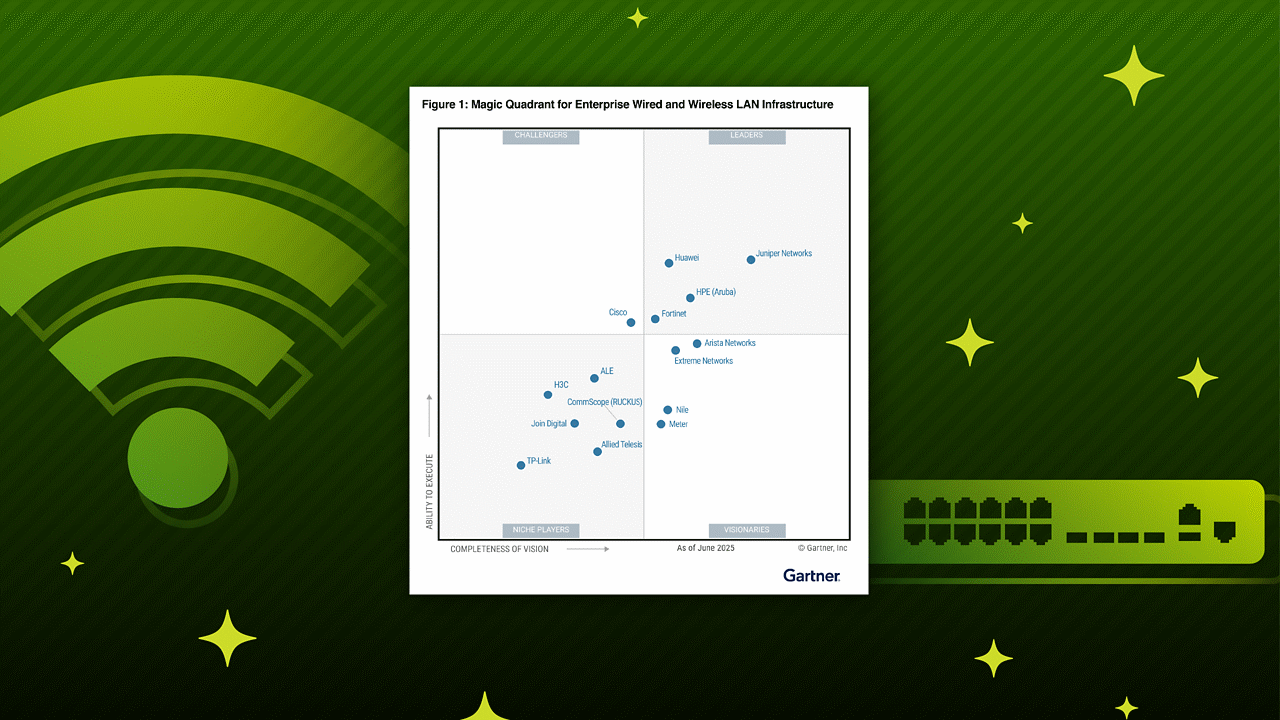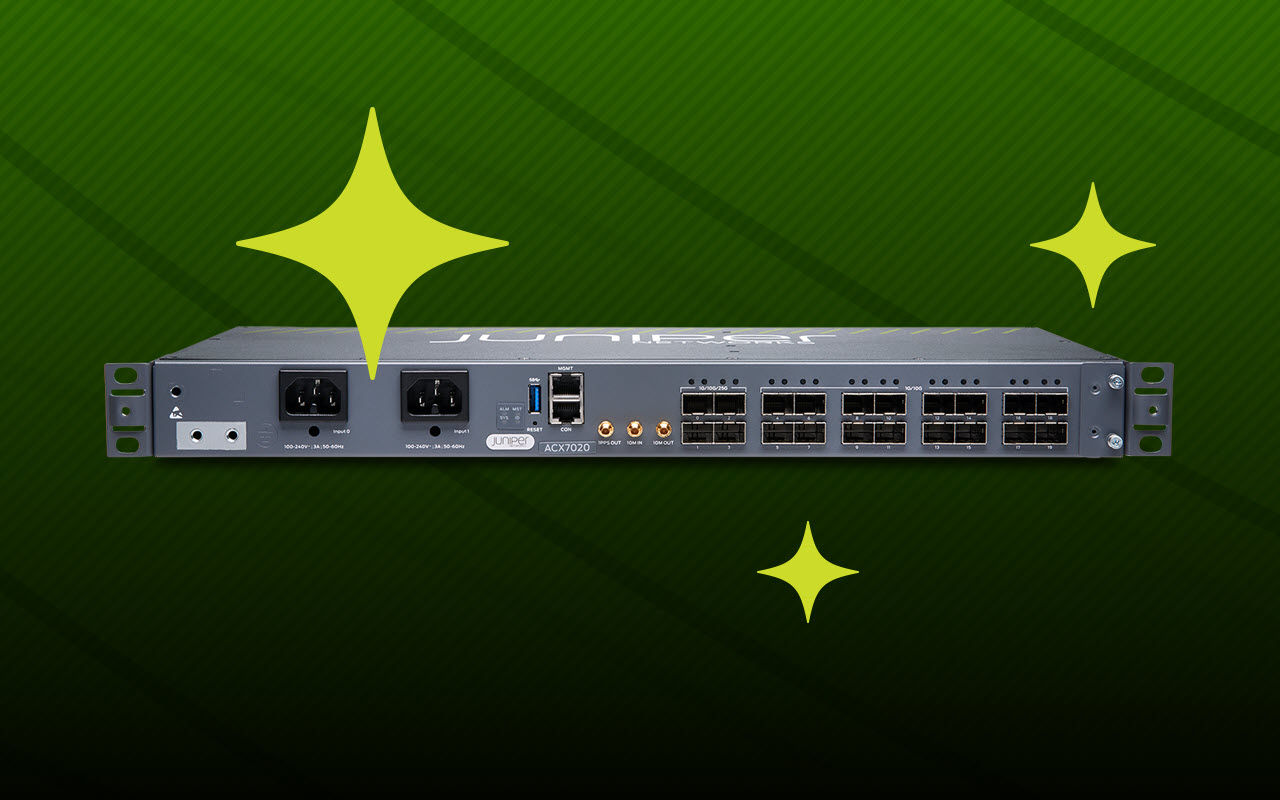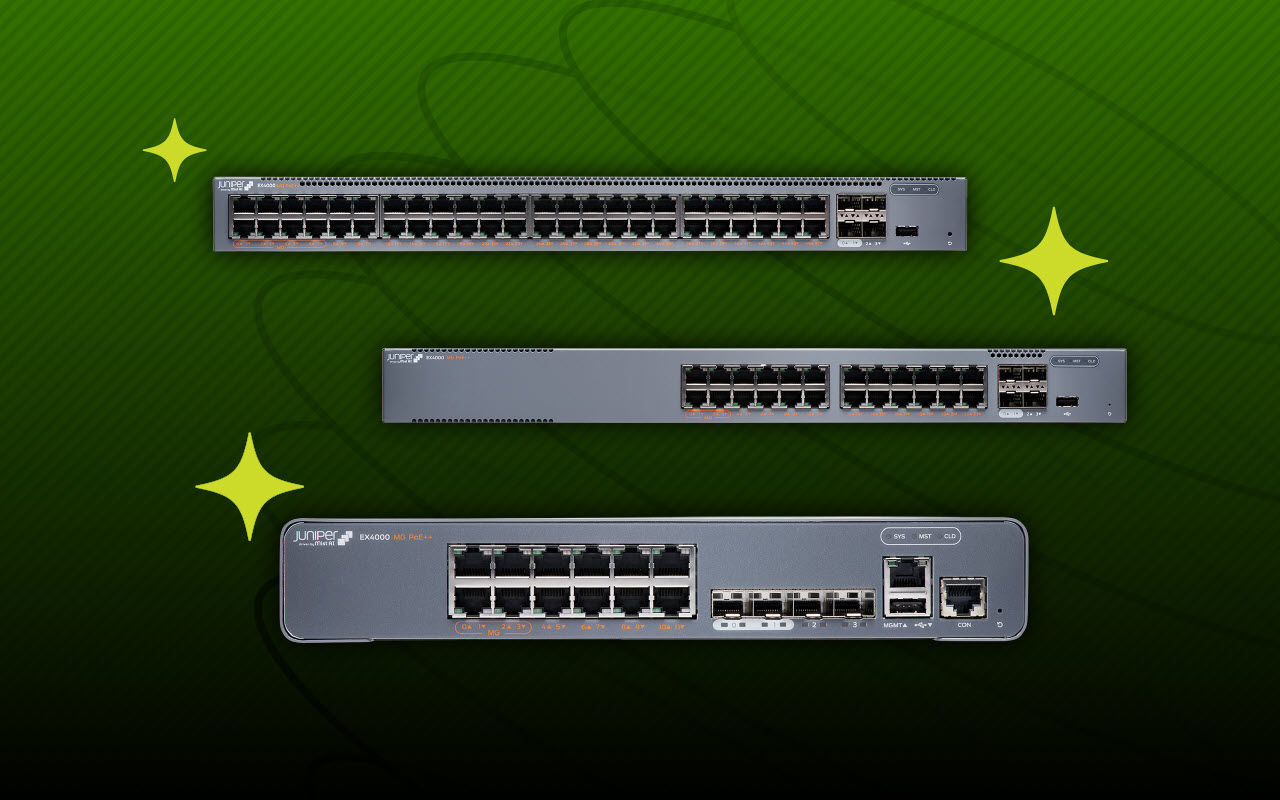Junos Fusion Technology Datasheet
Download DatasheetProduct Overview
With Junos Fusion technology, network administrators can reduce network complexity and operational expenses by collapsing underlying network elements into a single, logical point of management using MX Series 3D Universal Edge Routers and QFX Series and EX Series switches running the Junos operating system. Based on the IEEE 802.1BR standard, Junos Fusion technology is a rich, open framework that makes networks more versatile, extensible, and responsive in multivendor environments.

Product Description
Growing network complexity continues to burden network administrators across networking layers, in service provider access networks, in data center networks, and in enterprise campus networks. This complexity is driving network administrators to staff large operations teams in order to configure and manage enormous numbers of endpoints through the network, increasing the operational, administrative, and management burden while driving TCO higher.
The problem is compounded in heterogeneous environments, where network administrators have to integrate multiple network management systems (NMS), element management systems (EMS) and operations support systems (OSS), as well as deal with potential discrepancies in troubleshooting and provisioning between systems, creating opportunities for human error.
Network administrators need a cost-effective methodology to virtualize the large number of endpoints found in cloud data centers with top-of-rack switches, enterprise campus access networks with switches in wiring closets, mobile networks with micro- and macro-cell site routers, and high-density aggregation sites requiring thousands of low-speed connections. Virtually fusing endpoint operation, administration, and management into the aggregation layer eliminates the complexity of scaling-out the ever growing number of endpoints in the network.
Junos Fusion Technologies
Junos Fusion technology helps reduce network complexity and operational expenses by enabling multiple distributed devices to be managed as a single, logical device. Three different Junos Fusion architectures are available: Junos Fusion Provider Edge, Junos Fusion Data Center, and Junos Fusion Enterprise.
Junos Fusion Provider Edge
For service providers, Junos Fusion Provider Edge is a technology enabler that overcomes optical pluggable physical limitations by delegating low-speed optical interfaces to a cost-appropriate switch, virtually expanding connectivity to thousands of ports from a single Juniper Networks MX Series 3D Universal Edge Router.
Junos Fusion Data Center
Junos Fusion Data Center provides automated network configuration and operational simplicity for medium to large data centers with up to four QFX10000 switches deployed in the spine layer and any combination of up to 64 QFX5100, QFX5110-48S, QFX5200-32C, and EX4300 top-of-rack switches deployed as satellite devices.
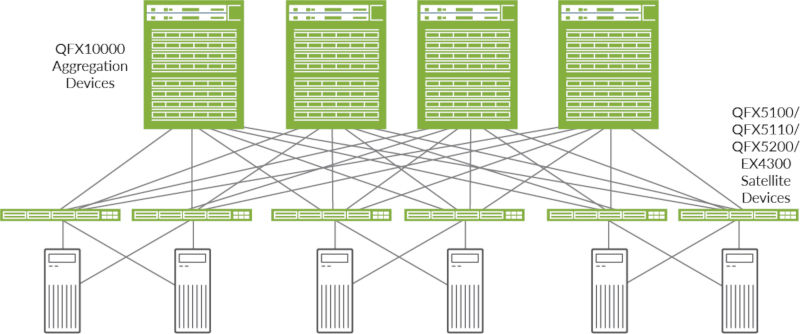
Figure 1: Junos Fusion Data Center deployment.
Junos Fusion Enterprise
For enterprise networks, Junos Fusion Enterprise provides automated network configuration and simplifies scalability for medium to large enterprise networks with the Juniper Networks EX9200 line of Ethernet switches and EX4300, EX3400, EX2300, and EX2300-C switches. Junos Fusion Enterprise technology can be deployed across a building, or multiple buildings, to connect large numbers of devices in a fabric that can be managed as a single device.
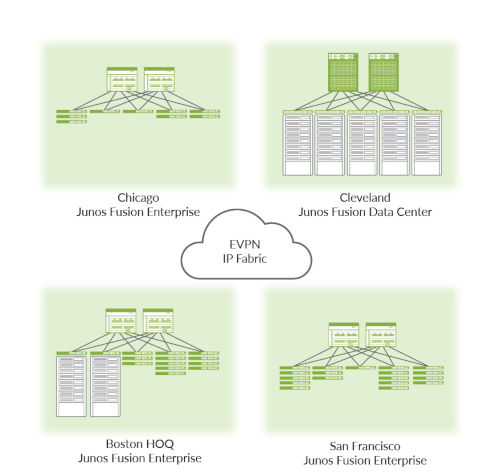
Figure 2: Junos Fusion Enterprise and Junos Fusion Data Center fabrics across multiple buildings
In Junos Fusion Data Center and Junos Fusion Enterprise environments, Junos Space Network Director provides a single-pane-of-glass solution for managing the entire network, enabling network agility and reducing costs. Using standards-based EVPN technology, multiple buildings configured with Junos Fusion Enterprise technology can be interconnected with Junos Fusion Data Center fabrics to form an IP fabric. In such a configuration, all enterprise buildings and data centers can follow uniform VLANs, configurations and policies rather than each building having separate VLANs and policies.
With Junos Fusion technology, service providers and enterprises can reduce network complexity and operational costs by collapsing underlying network elements into a single, logical point of control from Junos OS-based Juniper routing and switching platforms. It is designed for customers who need to cost-effectively deploy many 1GbE/10GbE/40GbE/100GbE switch ports in a data center, business edge, or access and aggregation network that can be managed from a central device. In addition, existing switches and routers can be easily migrated to a Junos Fusion architecture with a simple software upgrade, offering full investment protection.
Key Components
The Junos Fusion architecture consists of two major components: “Aggregation” devices and “Satellite” devices.
- Aggregation devices: Aggregation devices serve as the core of a Junos Fusion fabric. One or two aggregation devices can be used in a single Junos Fusion fabric. All configurations take place from the Aggregation device.
- Satellite devices: Satellite devices form the access layer of a Junos Fusion fabric. These devices, which are connected via uplinks to the Aggregation devices, need not be individually managed as the control plane resides on the Aggregation device.
Depending on the technology, different products can be used as Aggregation or Satellite devices in a particular Junos Fusion Fabric (see Table 1).
| Junos Fusion Technology | Aggregation Device | Satellite Device | Satellite Device Mode |
| Junos Fusion Provider Edge | MX Series | QFX5100, EX4300 | Port-extended and distributed forwarding |
| Junos Fusion Data Center | QFX10000 | QFX5100, QFX5110-48S, QFX5200- 32C, EX4300 | Port-extended and distributed forwarding |
| Junos Fusion Enterprise | EX9200 | EX4300, EX3400, EX2300, EX2300-C | Port-extended |
These components work together as a single switching system, flattening the network to a single tier without compromising resiliency. Network administrators can build individual Junos Fusion fabrics comprised of a pair of Aggregation devices and a set of Satellite devices; each fabric is a discrete unit, managed as a single device. Fabrics can be small—for example, a pair of Aggregation devices and a handful of Satellites—or large, with up to 64 Satellite devices supporting thousands of ports, based on the needs of the network operator.
In Junos Fusion Enterprise deployments, Satellite devices do not need to be individually connected to Aggregation devices. Up to 10 Satellite devices can be interconnected via standard 10GbE/40GbE interfaces to form a “cluster,” which in turn can be connected to the Aggregation devices over a pair of fiber uplinks. Satellite devices or clusters can also be dual-homed or single-homed to the Aggregation devices.
Junos Fusion Deployment Mode Options
Junos Fusion technology can be deployed in a variety of modes, depending on the desired deployment scenario.
- Port-Extended Mode: In port-extended mode, ports on the Junos Fusion Aggregation devices are extended to the Junos Fusion Satellite devices, virtually maintaining feature functionality of the Aggregation device’s port. All L2 and L3 decisions are processed on the Aggregation device, as the Satellite device provides simple connectivity back to the Aggregation device. A likely scenario for Junos Fusion extended and programmable mode on MX Series routers, EX Series switches or QFX Series switches would be in a multitenant data center environment used to connect a large number of servers running different applications owned by different tenants, as none of the servers or tenants need to communicate with one another.
- Distributed Forwarding Mode: Junos Fusion can also be deployed with distributed forwarding on Satellite devices for high-performance and low-latency applications.
Only port-extended mode is supported by Junos Fusion Enterprise, so Satellite devices simply forward all traffic to the Aggregation device, enabling network administrators to monitor and manage the entire enterprise campus building from a single device. Features such as Power over Ethernet Plus (PoE+), LLDP- MED and 802.1x are also supported in Junos Fusion Enterprise architectures to help meet enterprise campus requirements.
Features and Benefits
| Feature | Benefit |
| New service models |
|
| Flexible deployment modes |
|
| Centralized management |
|
| Intelligent network services |
|
| Intelligent deployment model |
|
| Extensibility |
|
Juniper Networks Services and Support
Juniper Networks is the leader in performance-enabling services that are designed to accelerate, extend, and optimize your high-performance network. Our services allow you to maximize operational efficiency while reducing costs and minimizing risk, achieving a faster time to value for your network. Juniper Networks ensures operational excellence by optimizing the network to maintain required levels of performance, reliability, and availability. For more details, please visit https://www.juniper.net/us/en/products.html.
Ordering Information
Junos Fusion is offered as a part of platform fees. For details on how to order the controller or Satellite platforms, please refer to www.juniper.net or contact your sales representative.
About Juniper Networks
At Juniper Networks, we are dedicated to dramatically simplifying network operations and driving superior experiences for end users. Our solutions deliver industry-leading insight, automation, security and AI to drive real business results. We believe that powering connections will bring us closer together while empowering us all to solve the world’s greatest challenges of well-being, sustainability and equality.
1000523 - 008 - EN DEC 2020




